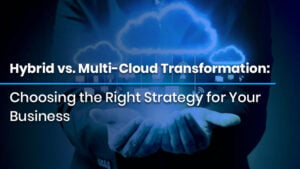
How to Strengthen Security Using CIS Controls and Posture Analysis
How to Strengthen Security Using CIS Controls and Posture Analysis Introduction In the fast-paced and ever-evolving world of cybersecurity, defending digital infrastructure goes far
Enhance your Skills in Cloud Computing , IP Networking , Microsoft , Artificial Intelligence , Cybersecurity and Many More . Come and Join IPSpecialist.

How to Strengthen Security Using CIS Controls and Posture Analysis Introduction In the fast-paced and ever-evolving world of cybersecurity, defending digital infrastructure goes far

How to Prepare for the AWS Data Engineer Exam Introduction With the world becoming increasingly data-driven, organizations are depending on cloud-based systems to store, process,

Hybrid vs. Multi-Cloud Transformation: Choosing the Right Strategy for Your Business Introduction In the digital-first economy of today, cloud transformation is no longer a
Table of Contents
As we all know, data is becoming more and more crucial in today’s environment. To improve their judgments and stay competitive, businesses of all kinds are beginning to rely more and more on data. Big data and data mining have increased as a result of this.
The practice of obtaining important information from sizable data sets is known as data mining. To uncover patterns and connections in data, complex algorithms are used. The phrase “big data” refers to extremely massive data sets.
Businesses use big data and data mining to learn more about their consumers, operations, and finances. They may boost their bottom line by knowing their data and using it to inform smarter decisions.
Although “big data” and “data mining” are frequently used interchangeably. Large, complicated datasets businesses use to make choices are called “big data.” Conversely, data mining is extracting useful information from those enormous data sets. This article covers detailed knowledge of Big Data and Data Mining and their differences.
Check out our Cloud Computing Courses now if you are considering pursuing a career in Cloud Computing.
Big businesses and organizations have gathered enormous, vast, or voluminous data, information, or pertinent statistics. Since it is challenging to manually compute the big data, numerous software and data storage have been designed and prepared.
It is used to find patterns and trends and to decide on human behavior and technological interactions.
Organizations can make defensible judgments based on evidence rather than speculation if they have access to more data. Big Data analytics can spot trends, streamline procedures, and forecast results.
Businesses can provide personalized experiences that increase customer happiness and loyalty by understanding their customers’ behavior, preferences, and needs. Big Data can also create fresh goods and services that address unmet consumer needs.
Data mining obtains significant and essential knowledge and information from enormous data sets or libraries. It meticulously extracts, reviews, and processes a massive amount of data to uncover patterns and correlations that may be significant for the business.
The five tiers that makeup data mining’s components are as follows: –
Analyze relationships and patterns in transaction data that has been stored to obtain knowledge that can aid in making better business decisions.
Data mining aids in credit ratings, targeted marketing, fraud detection, and customer relationship (determining which consumers are devoted to a company and which would defect).
All big data solutions depend on availability and only refer to massive amounts of data. It can be viewed as a fusion of data mining and business intelligence. Data mining uses various techniques and applications on Big Data to provide targeted results.
The argument between big data and data mining has existed for a while. Both offer advantages and disadvantages, but the company must decide which is best for them. Large amounts of data can be handled via big data, but data mining can be more focused and precise. What the organization requires and what will work best for them ultimately determine the choice.
© 2025 All rights reserved | Privacy Policy | Terms and Conditions | Sitemap | Cookie Policy




